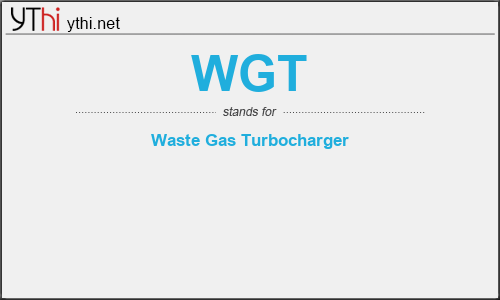What does WGT mean? What is the full form of WGT?
The full form of WGT is Waste Gas Turbocharger
A wastegate is a valve that controls the flow of exhaust gases to the turbine wheel in a turbocharged engine system
The internal construction of the turbine consists of the wastegate valve and hollow passage within the turbocharger. So, it allows some of the boost pressure to enter into this passage. Then, the exhaust system automatically routes the bypassed exhaust gases to the catalytic converter and tailpipes.
In this system, the speed of the turbine wheel determines the diversion of the exhaust gases. Besides, the wastegate unit reduces the high boost pressure developed by the compressor to the desired level. Thus, it delivers optimum engine performance with controlled peak cylinder pressure.
Furthermore, the waste-gate regulates the pressure of the relief valve. It, in turn, limits the boost pressure in the turbocharger system. This is helpful in preventing the engine from potential mechanical damages caused by the high pressure. Furthermore, the system automatically opens the waste-gate valve when the pressure reaches the pre-set levels. Then, it allows all the high-pressure exhaust gases to escape the turbine wheel and enter into the downstream/outlet. Thus, it prevents the exhaust gas pressure from rising more than required.
The wastegate turbocharger has four main types which depend upon how the wastegate valve operates:
- Manual
- Pneumatic
- Electric
- Hydraulic
Nowadays, vehicles with turbocharged engines feature the wastegate turbocharger. This technology helps to deliver optimum engine performance during peak operating conditions. In addition, the wastegate valve prevents the turbocharger from over-running. Particularly, it also avoids the engine from over-boost and prevents any mechanical failure.
WGT
means
Waste Gas Turbocharger![]()
Translate Waste Gas Turbocharger to other language.


Leave a Reply
You must be logged in to post a comment.